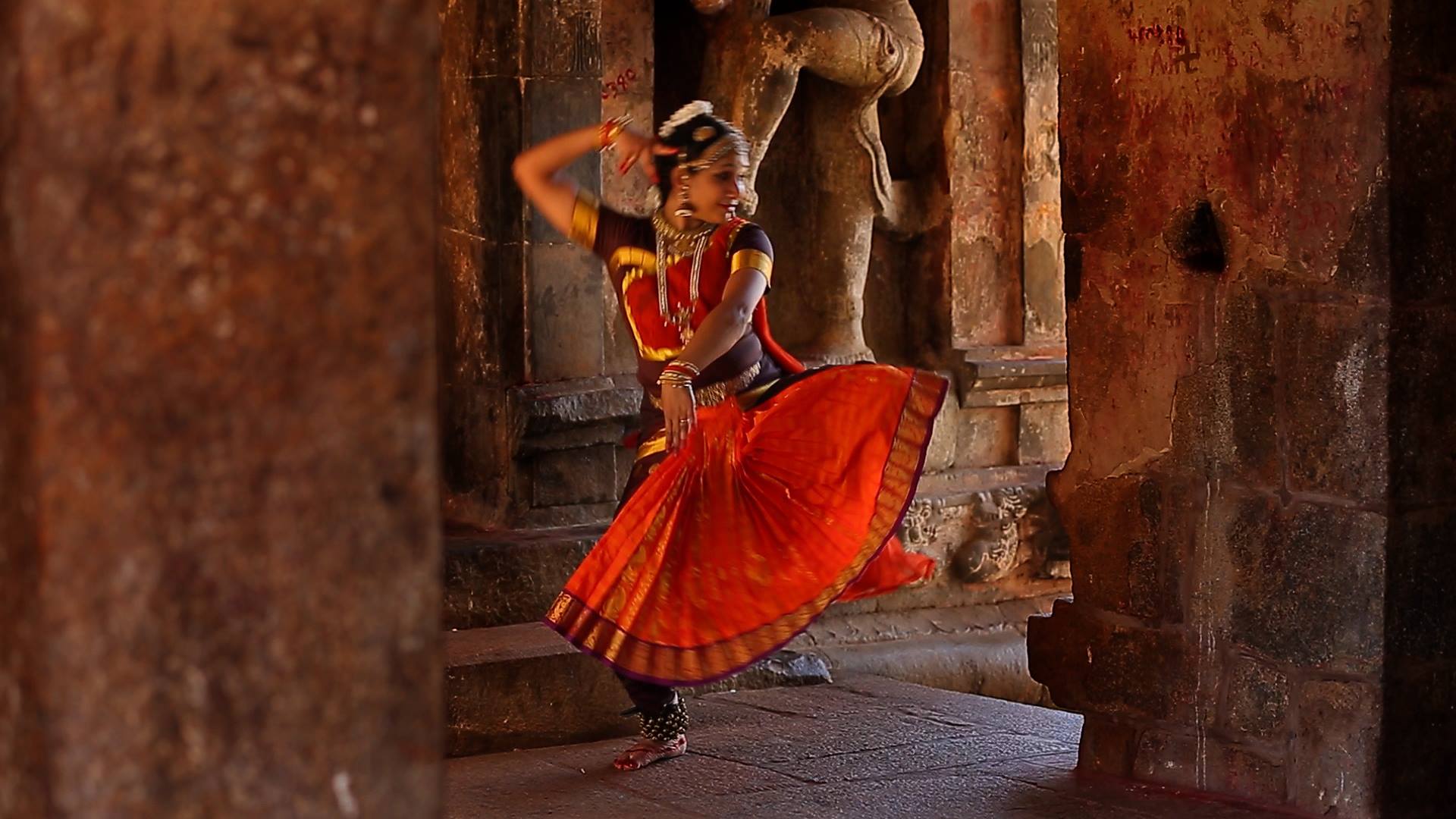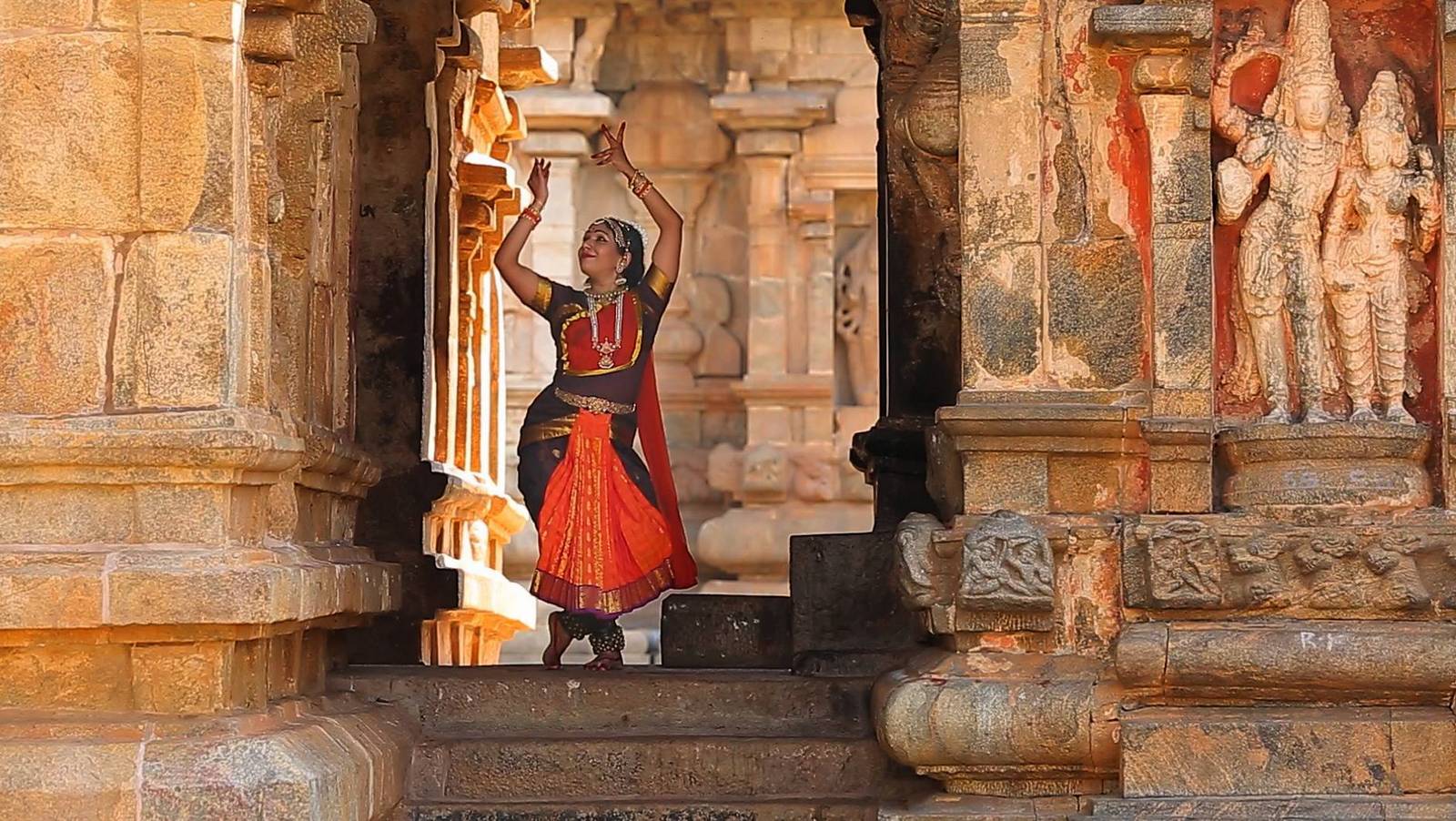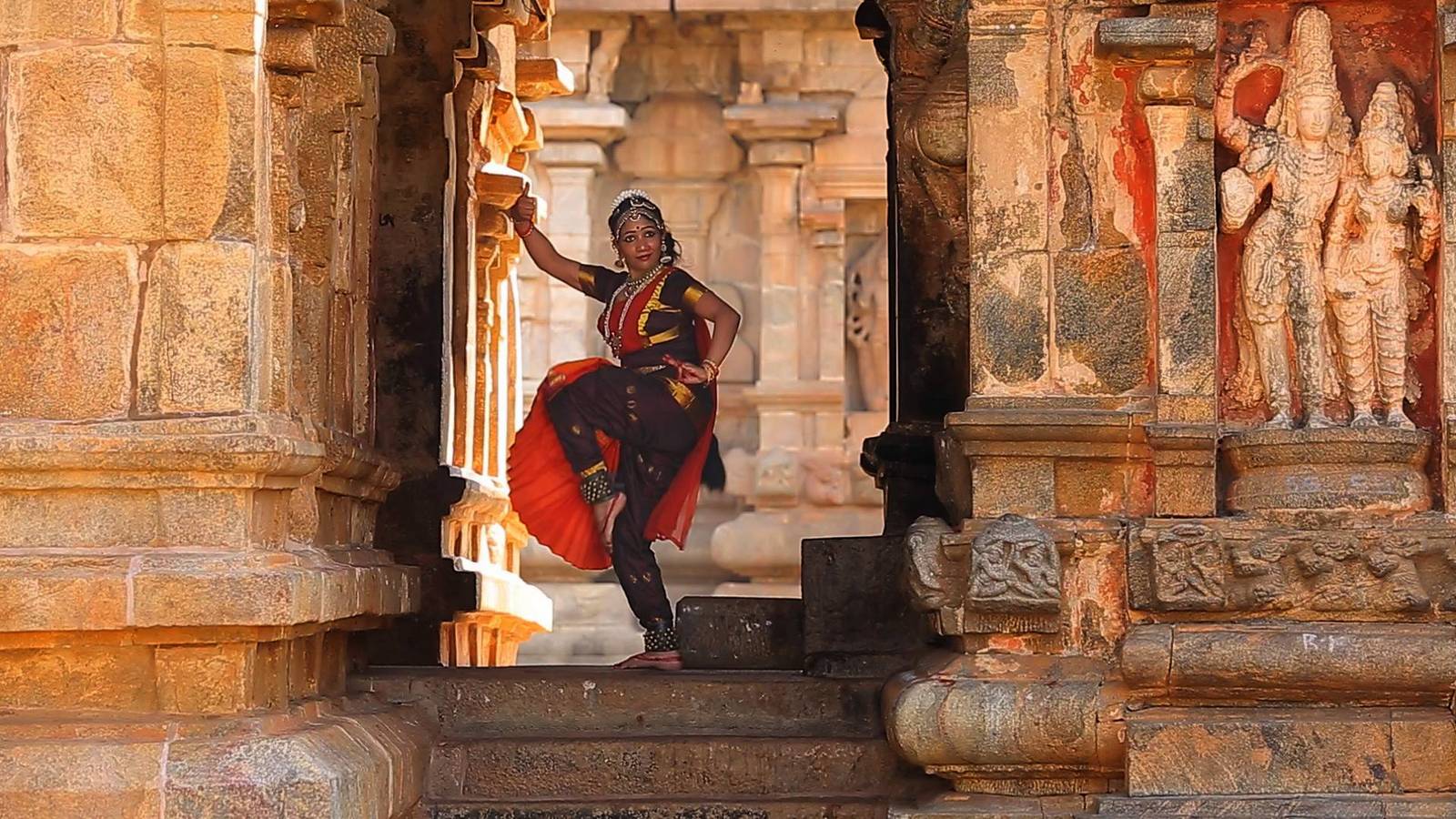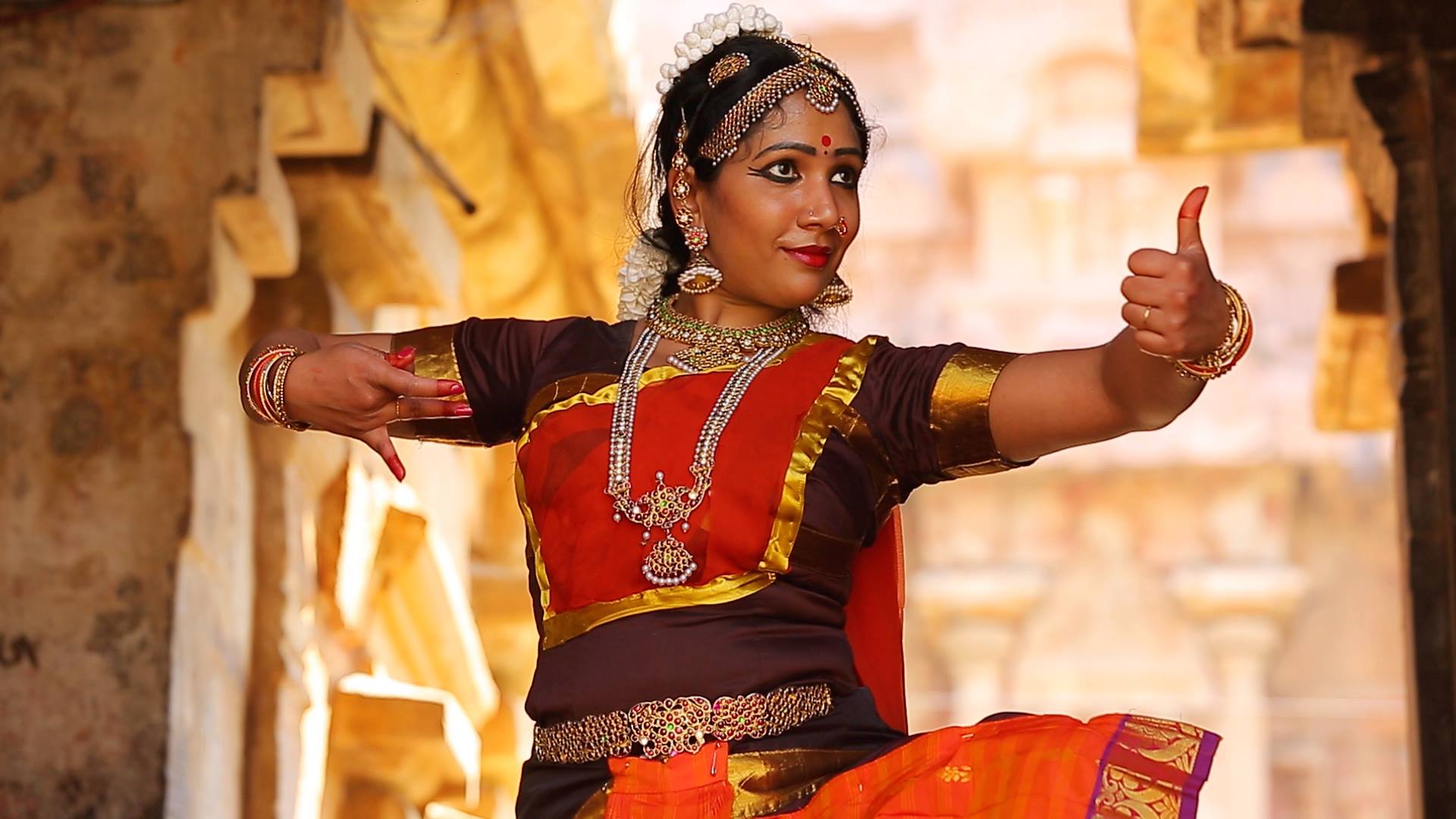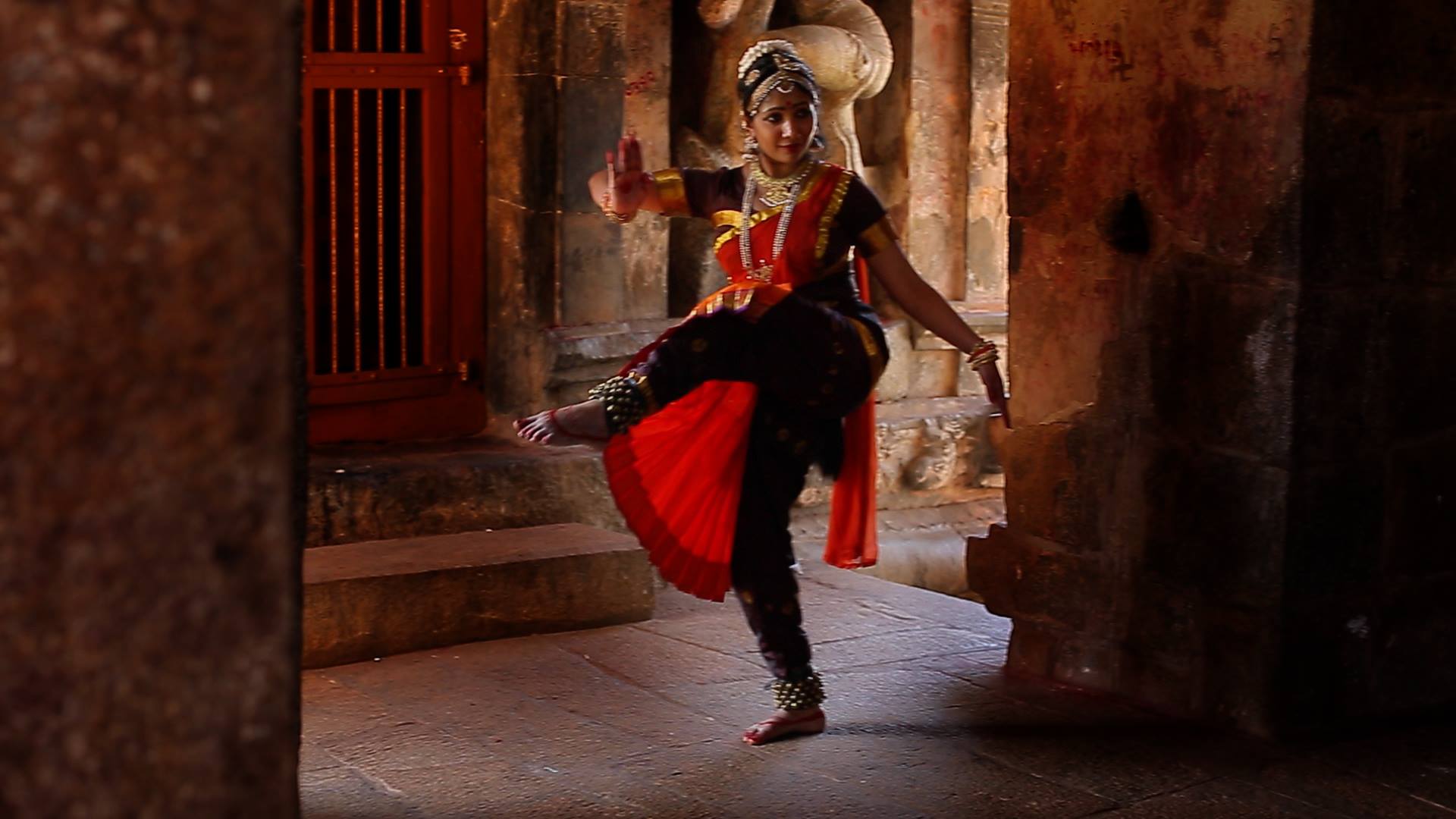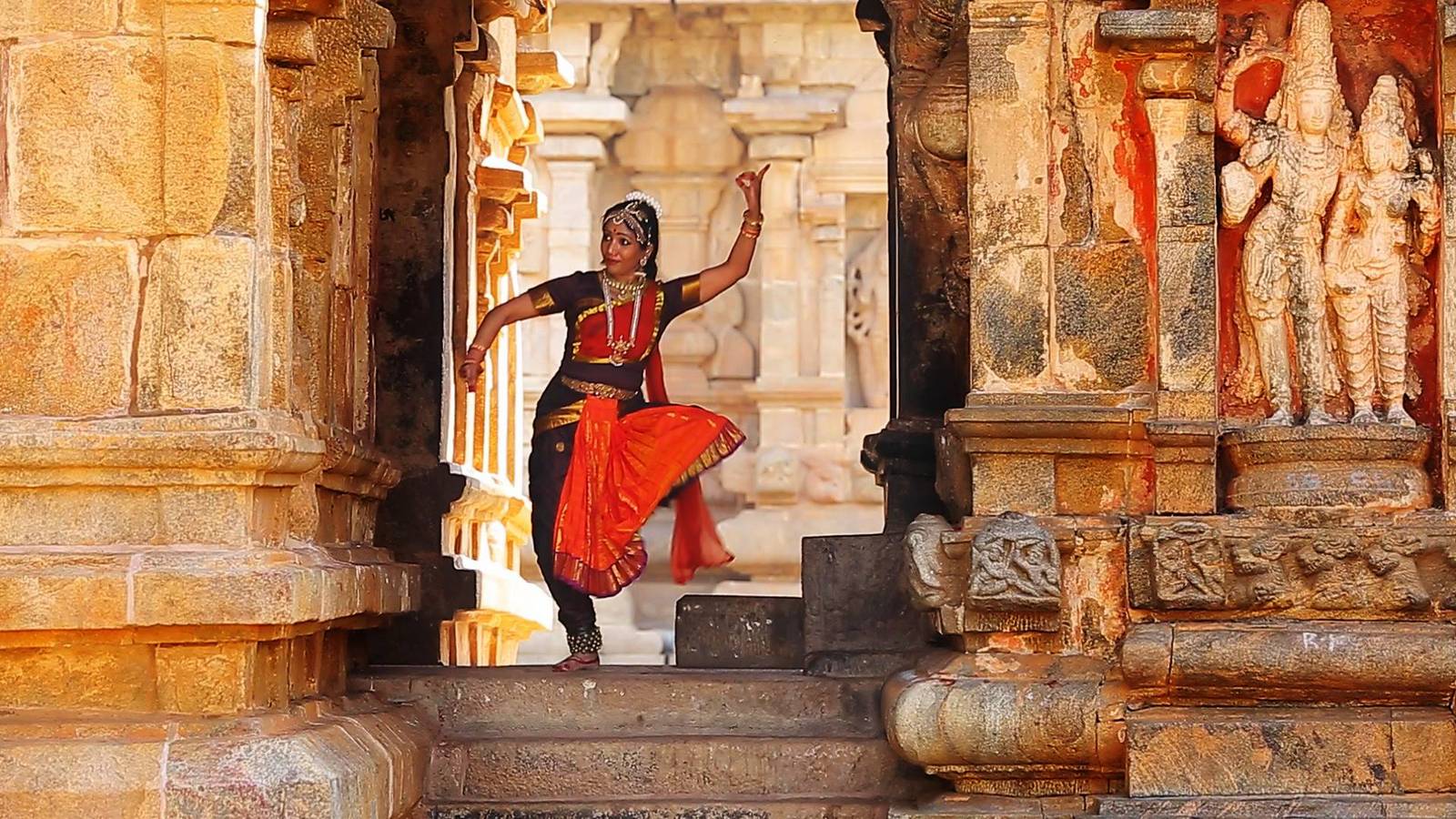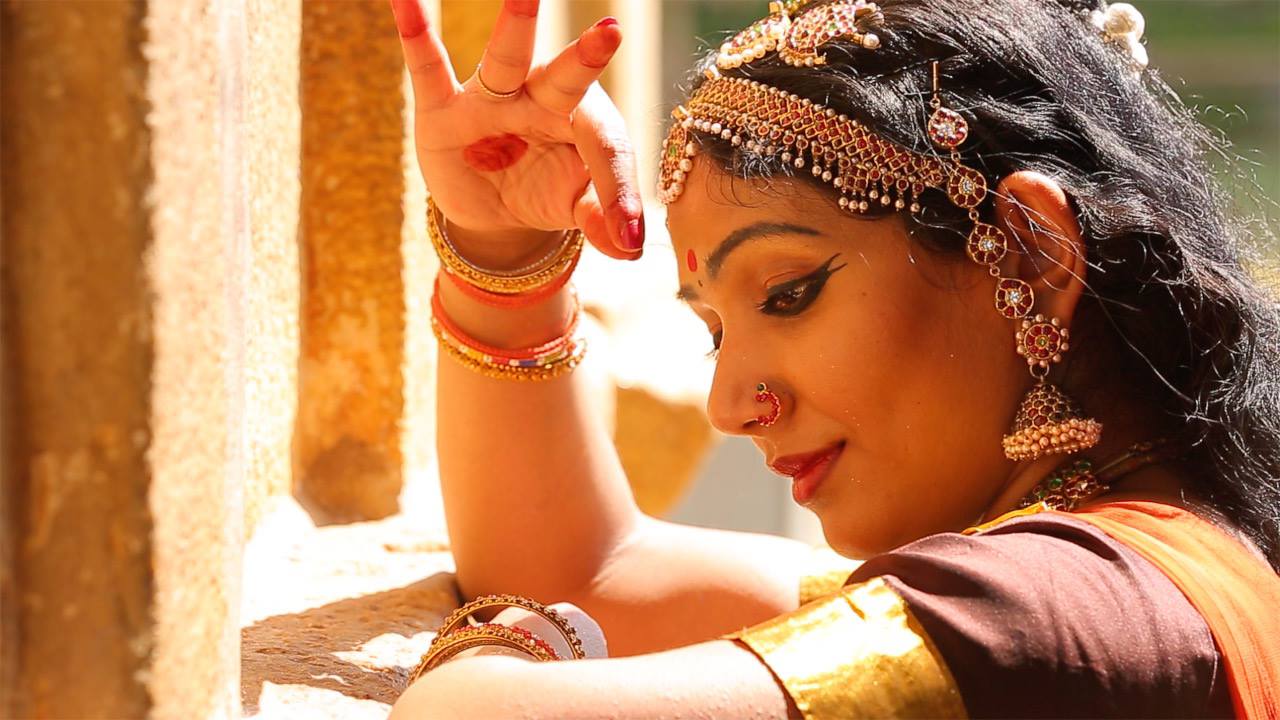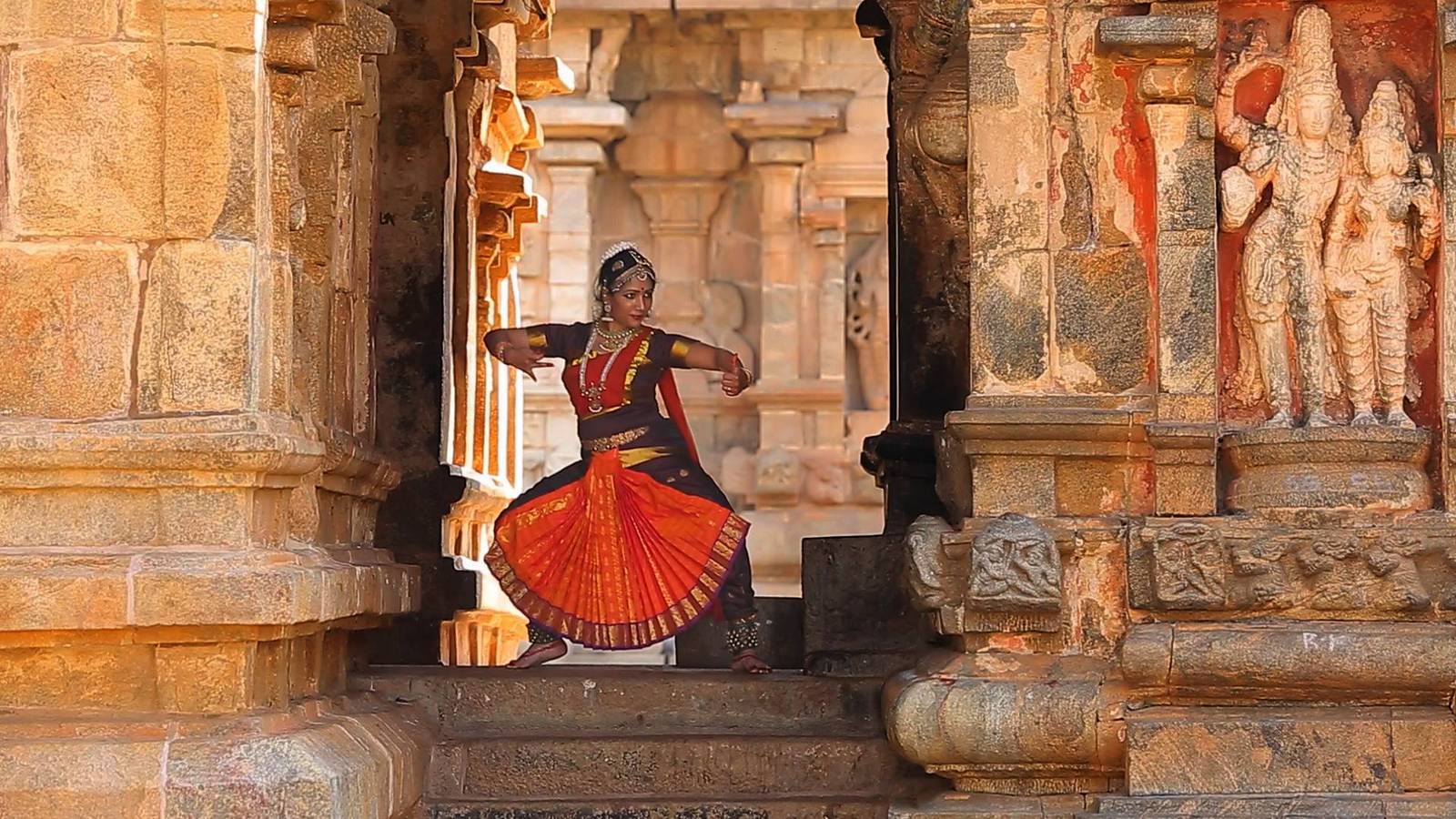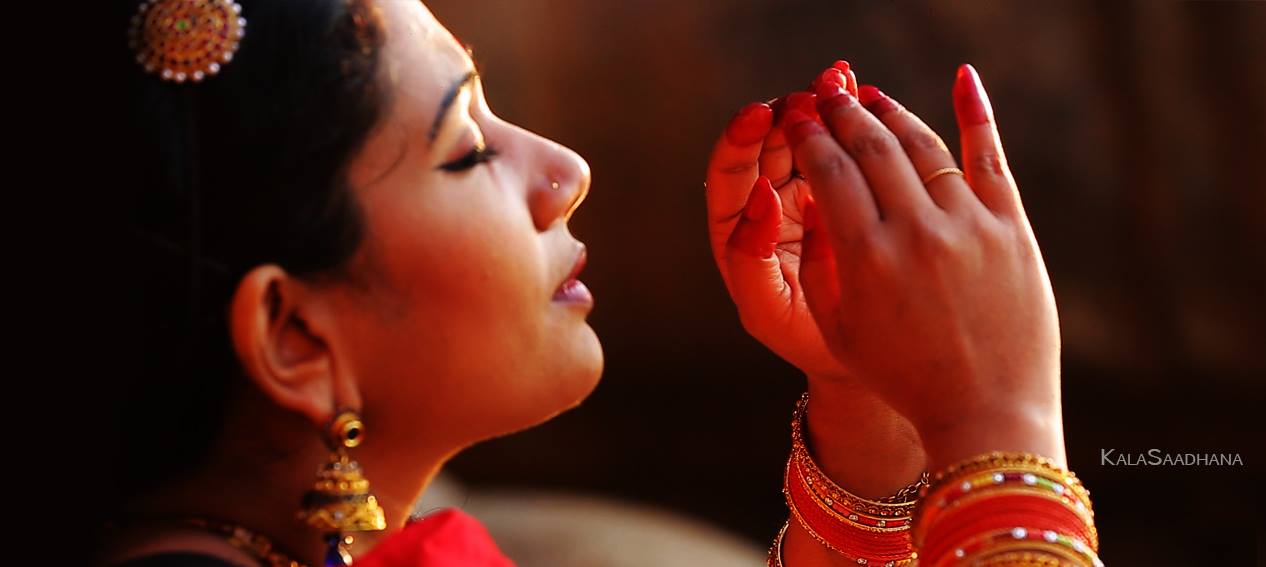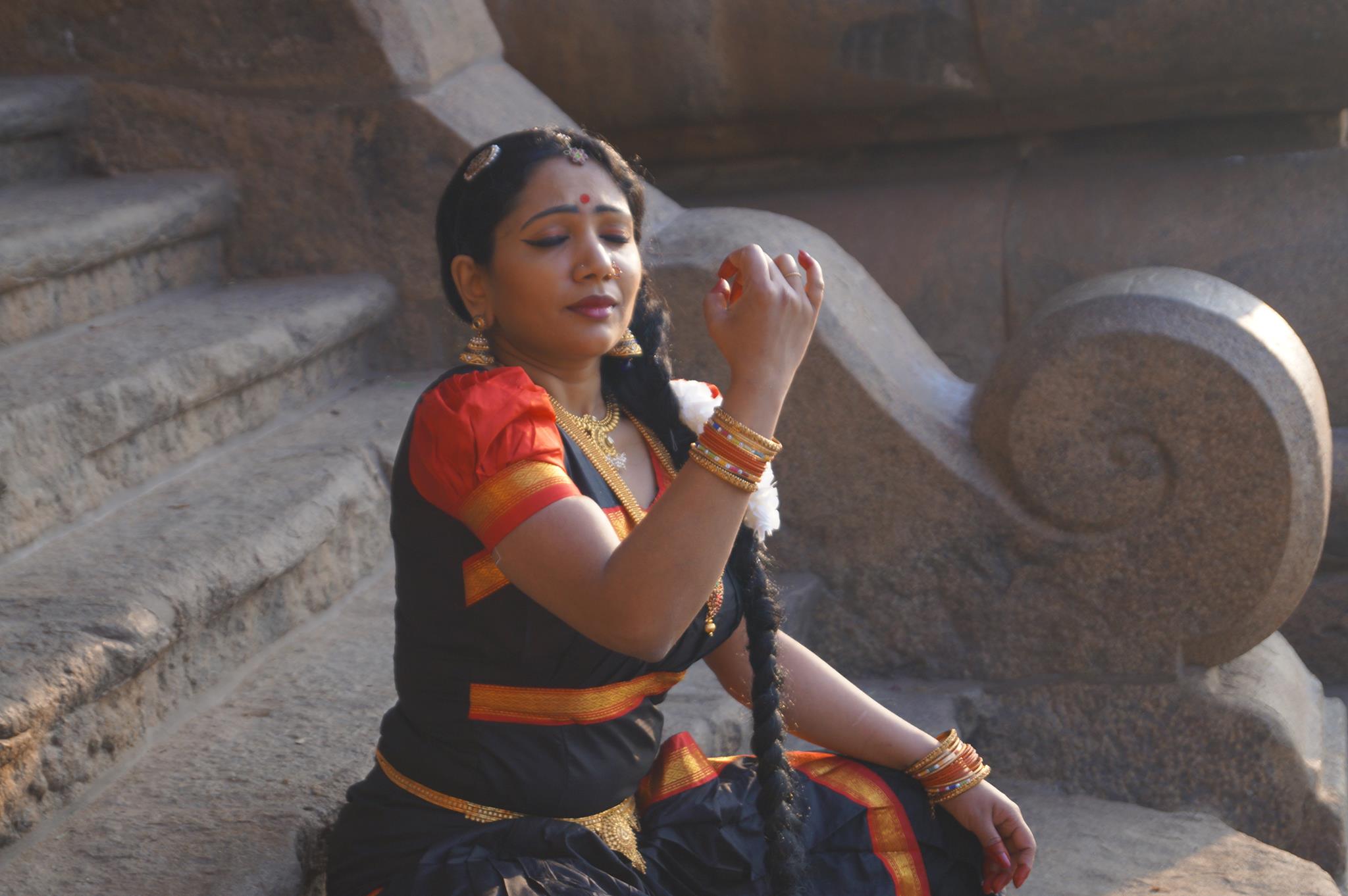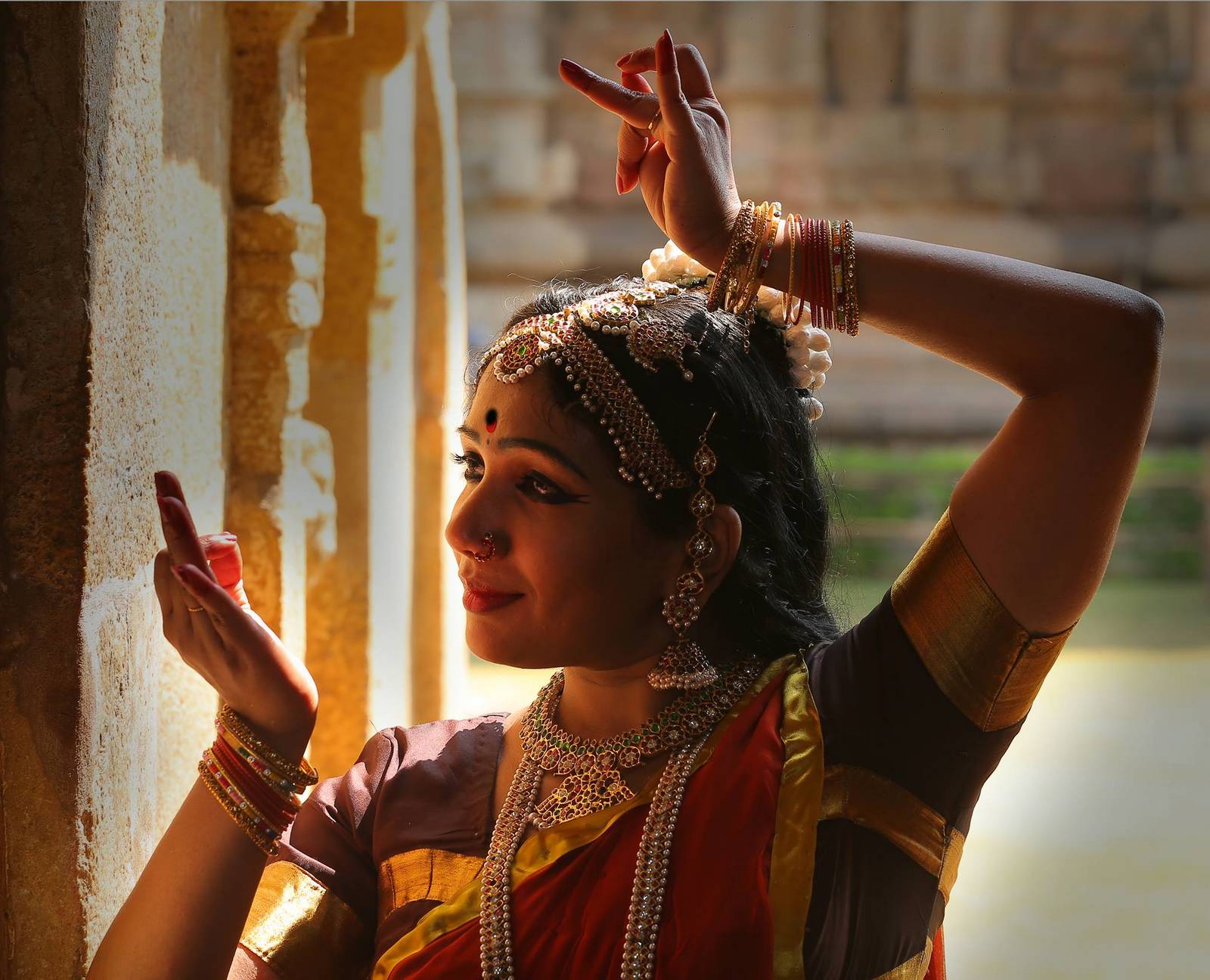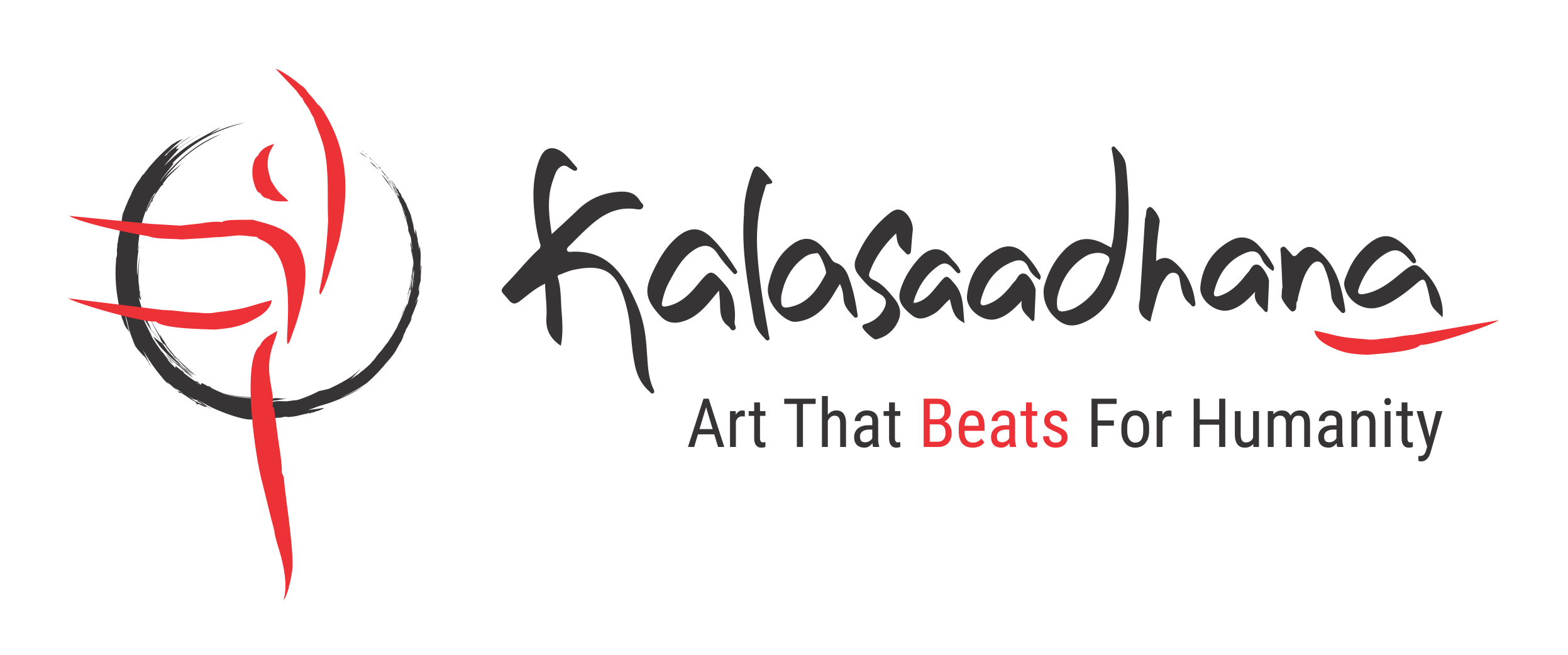This dance is a tribute to Rajendra Chola, one of the greatest Tamil kings, who is celebrated for his military brilliance and visionary leadership. He is credited with expanding the Chola Empire across the seas to South-East Asia and up north to the Ganges, thanks to his formidable navy. On the 1000th anniversary of the Gangaikonda Cholapuram temple and its Kumbabishekam, KalaSaadhana dedicates this performance to commemorate the legacy of King Rajendra Chola.
Rajendra Chola, the Chola emperor, succeeded his father, Rajaraja Chola I, in 1014 CE and ruled during a time of unparalleled glory. He is considered one of the greatest rulers and military strategists of India. Under his leadership, the Chola Empire grew to become one of the most powerful and expansive empires in Indian history, stretching from the banks of the Ganga River in the North to the shores of the Indian Ocean in the West.
Among his many accomplishments, Rajendra Chola built a vast artificial lake, stretching sixteen miles long and three miles wide, which was one of the largest man-made lakes in India at the time. His capital, Gangaikonda Cholapuram, was an impressive symbol of his empire's grandeur and military might. The poet Ottakoothar beautifully describes the magnificence of his capital, stating, "On seeing Gangapuri, all fourteen worlds encircled by the billowing ocean are overwhelmed with joy."
Under his reign, the Chola Empire reached its zenith, both militarily and diplomatically, with unmatched naval prestige. His legacy continues to inspire awe, and this dance is a humble homage to a king whose vision and leadership transformed the landscape of India and beyond.
சோழ மன்னர்களில் இராஜேந்திரனுக்கு ஒப்பாரும் மிக்காரும் இல்லை என்ற பெருமை வாய்ந்தவர். கடல் தாண்டி இன்றைய மலேசியாவில் கெடா ( கடாரம் ) bujang Valley-யை வென்றதால் கடாரம் கொண்டான் என பட்டம் பெற்றார். இப்பெயரை அவர் மதிப்புடன் ஏற்றுக்கொண்டமைக்கு காரணம் தமிழர்கள் முதன் முதலில் வணிகர்களாகவும், பணியாளர்களாகவும் குடியேறிய பகுதி கடாரம் என ஆய்வாளர்களால் தெரிவிக்கப்படுகிறது. இத்துறைமுக நகரம் இன்றைய பினாங்கு நகருக்கு வெகு அருகில் உள்ளது.
இந்த துறைமுகமானது மலைகள் சூழ்ந்த பாதுகாப்பு பகுதியில் இருந்த மிகச் சிறந்த துறைமுகமாக அக்காலத்தில் விளங்கியது. சீனாவிற்கும், இந்தியாவிற்கும் இடையில் செல்லும் கப்பல்கள் இத்துறைமுகம் வழியாகவே சென்று வந்திருகிறது. 11 ஆம் நூற்றாண்டில் இப்பகுதியில் சீன வணிகர்களின் அச்சுறுத்தல்கள் மிகுவும், தமிழ் வணிகர்களுக்கும் இப்பகுதியில் வாழ்ந்த தமிழர்களுக்கும் இதனால் பல இன்னல்கள் ஏற்பட்டுள்ளது. அப்போது ஸ்ரீவிஜயத்தை ஆண்ட அரசர்களும் சீன அரசுகளின் கட்டுப்பாட்டில் இருக்கவேண்டிய நிலை ஏற்பட்டது.
தமிழர்களுக்கு ஏற்பட்ட துயரத்தைப் போக்க மாமன்னன் ராஜேந்திரன் பெரும் கடற்படையை திரட்டி, இவ்வரசுகளை அடிபணியச் செய்து தமிழர்களுக்கும், தமிழ் வணிகர்களுக்கும் ஆதரவு நல்கினார். உலகத் தமிழரின் வாழ்வு சிறக்க கடற்படையை திரட்டி பார் போற்றும் மன்னராக இன்றளவும் விளங்கி வருகிறார் ராஜேந்திர சோழன்.
ராஜேந்திர சோழனின் கடல் கடந்து சென்ற கடாரப் படையெடுப்பு 1026-ம் ஆண்டு தொடங்கியது. ராஜேந்திரன் கடற்படை பல கப்பல்களையும், சிறிய படகுகளையும் கொண்ட பெரும்படையாக விளங்கியிருக்கிறது.
Paravai Nachiyar was a revered figure from a family of dancing girls, and her legacy endures to this day. She is worshipped alongside Sundarar in Siva temples, where she is honored for her devotion and cultural significance.
Interestingly, Rajendra Chola I also had a beloved personal assistant named Paravai, who was known as an ‘anukki’—a term used to describe trusted female personal assistants to the kings. The name Paravai was chosen in homage to Sundarar’s consort, reflecting the deep cultural ties and reverence for divine figures. In the royal court, anukkis were highly regarded for their loyalty and trustworthiness, while their male counterparts were known as anukkan.
Paravai, the assistant to Rajendra Chola I, is credited with constructing the Thyagaraja Temple at Tiruvarur in Tamil Nadu. She also covered the vimana of the temple with gold, a detail highlighted by Dr. Nagaswamy in his historical accounts.
In recognition of her contributions and honor, Rajendra Chola I had the Panaiyapuram temple rebuilt in Paravai’s honor while she was still alive. The town surrounding this temple was also named after her, further solidifying her influence and reverence in the Chola kingdom. Paravai’s legacy is a testament to her significant role in both the cultural and spiritual life of the Chola dynasty.
அவள் பெயர் பரவை
தியாக விடங்கர் (தியாகராஜர்) கோயிலில் தொண்டு புரிந்து வந்தவள். இவளின் பேரழகும், சைவத் தொண்டுகளும் மாமன்னன் கங்கை கொண்ட ராஜேந்திர சோழனை மிகவும் கவர்ந்தன.
பல நூறு வருடங்களாக செங்கல் கட்டுமானமாகவே இருக்கும் திருவாரூர் கோயிலை கற்றளியாக மாற்ற வேண்டும் என்பது பரவையின் ஆசை, இதை ராஜேந்திரனிடன் கூறுகிறார் பரவை. அவளை மிகவும் நேசித்த ராஜேந்திர சோழன் அவளின் வேண்டுகோளுக்காகத் தியாகராஜரின் திருக்கோயிலைக் கருங்கல் கொண்டு எடுத்து கற்றளியாகப் புதுப்பிக்கிறான். அவனின் 16-18ம் ஆண்டுகளில் வீதிவிடங்கனின் கோயில் கற்கோயிலாக மாற்றப்பெற்றது. கற்றளி மட்டும் போதாது, இந்த கோயிலை பொற் கோயிலாகவே மாற்ற வேண்டும் என்று பரவை ராஜேந்திரனிடம் கேட்டாள்.
உடனே ராஜேந்திரன் கோயிலை உள்ளும் புறமும் தங்கத்தகடுகள் போர்த்தி அழகு செய்தான்.
20ம் ஆட்சியாண்டில் (கி.பி.1032) மாமன்னர் ராஜேந்திர சோழன் தன காதலி பரவையாருடன் திருவாரூர் திருவீதிகளில் அரசு தேரில் அவளை அமரவைத்து ஊர் முழுவதும் பவனி வருகிறான். பவனிவந்து கோயிலுக்கு நுழைந்து காதலர்கள் இருவரும் தியாகேசப்பெருமானை ஒரு இடத்தில நின்று வணங்குகின்றனர். அவர்கள் இருவரும் நின்று வணங்கிய இடத்தில் அதன் நினைவாக விளக்கு ஒன்றை வைக்குமாறு ராஜேந்திரன் உத்தரவிடுகிறான். அந்த கல்வெட்டு இன்னும் அந்த கோயிலில் உள்ளது
Melody- Composing & Vocalist - Hariharan Suyambu Miruthangam,
Udukku, Morsing - Sunthar Kanesan
Violin - Athisaiyan Suresh
Musicarrangements - Recording & Editing/mixing - Muralitharan
Choreography - Lyrics - Rooban sivarajah
Copyrights: KalaSaadhana - ADI
